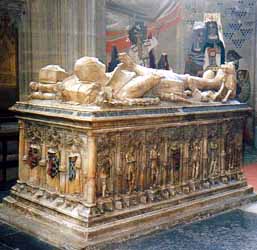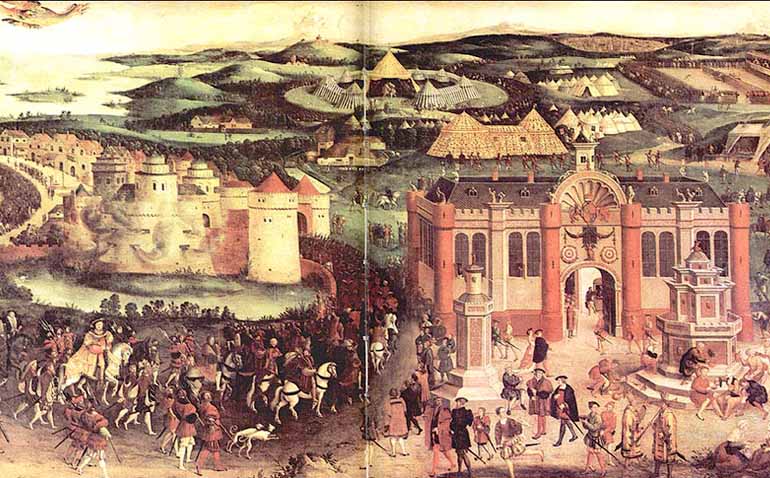St.Leger family
The St. Leger (pronounced saint ledger or sellinger) family is an old Anglo-Irish family with Norman and German roots going back over a thousand years, and whose name has appeared more than a few times in history. The surname St. Leger is an anglicized version of "de Sancto Leodegario".
According to family tradition they are descended from a Norman knight, Sir Robertus de Sancto Leodegario who is reputed to have supported the hand of William the Conqueror when he stumbled from his ship in the waters off Pevensey in 1066. It is also believed that Sir Rober had stigmata. (Stigmata are bodily marks, sores, or sensations of pain in locations corresponding to the crucifixion wounds of Jesus.)
Several generations of St. Legers fought in the Crusades. Lord Jean St. Leger (1160-1216) 'lived mainly on his French lands in Normandy whilst his brother Wizo cared for the lands at Fairlight in Sussex. As a result of his feudal duties, he accompanied the French King Philip August on his conquest of Normandy, placed thus in a bad position, in reprisal the English King confiscated his English lands and arrested him on reconquering Normandy. Jean was held prisoner at Corfe Castle in Dorset for many years. ... more

Sir Thomas St. Leger was executed
at Exeter in 1483 and his body interred in St. George's Chapel, Windsor, alongside that of his wife,
Anne Duchess of Exeter.
- A1. Robert de Sancto Leodegario, lvd:1066;
- B1. Hugh St.Leger;
- C1. Ralph St.Leger;
- D1. John St.Leger;
- E1. Ralph St.Leger;
- F1. Ralph St.Leger;
- G1. Ralph St.Leger, m. Anabilla;
- H1. Sir Ralph St.Leger, lvd:1337/1351, m. Joan Savage;
- I1. Arnold St.Leger, lvd:1352/1399;
- J1. Arnold St.Leger;
<=========
- J1. Arnold St.Leger;
- I1. Arnold St.Leger, lvd:1352/1399;
- H1. Sir Ralph St.Leger, lvd:1337/1351, m. Joan Savage;
- G1. Ralph St.Leger, m. Anabilla;
- F1. Ralph St.Leger;
- E1. Ralph St.Leger;
- K1. Sir John St.Leger of Ulcombe, m. Margery Donet;
- L1. Sir Thomas St.Leger, d:1483, m. Anne Plantagenet;
- L2. Sir James St.Leger of Shipton, m. Anne Butler;
==> Earls of Ormonde
- M1. Sir George St.Leger of Annery, m. Anne Knyvett;
==> Knyvett family
- N1. Sir John St.Leger, lvd:1516/1593, m. Katharine Neville;
==> Neville family
- O1. Frances St.Leger, m. John Stukeley;
- P1. Mary Stukeley, m. Simon Weekes; <== Weekes family
- O1. Frances St.Leger, m. John Stukeley;
- N1. Sir John St.Leger, lvd:1516/1593, m. Katharine Neville;
==> Neville family
- M1. Sir George St.Leger of Annery, m. Anne Knyvett;
==> Knyvett family
- D1. John St.Leger;
- C1. Ralph St.Leger;
- B1. Hugh St.Leger;
